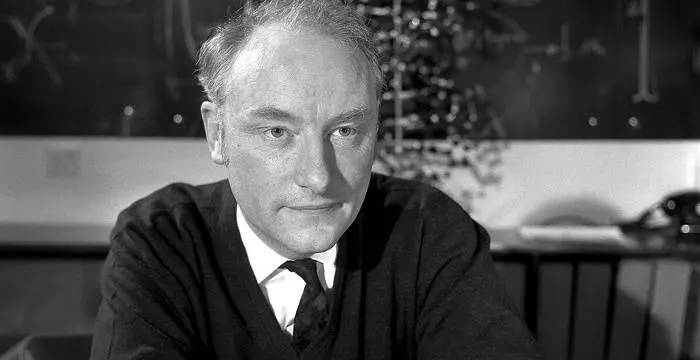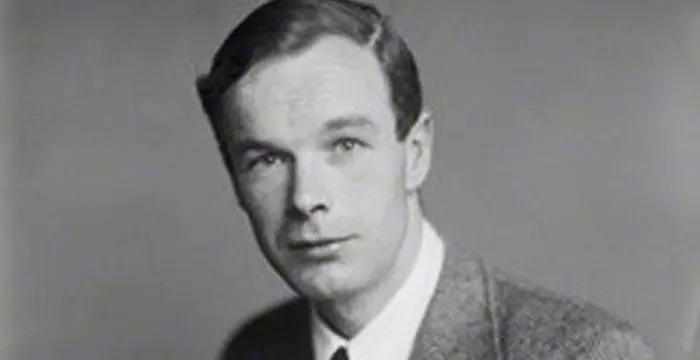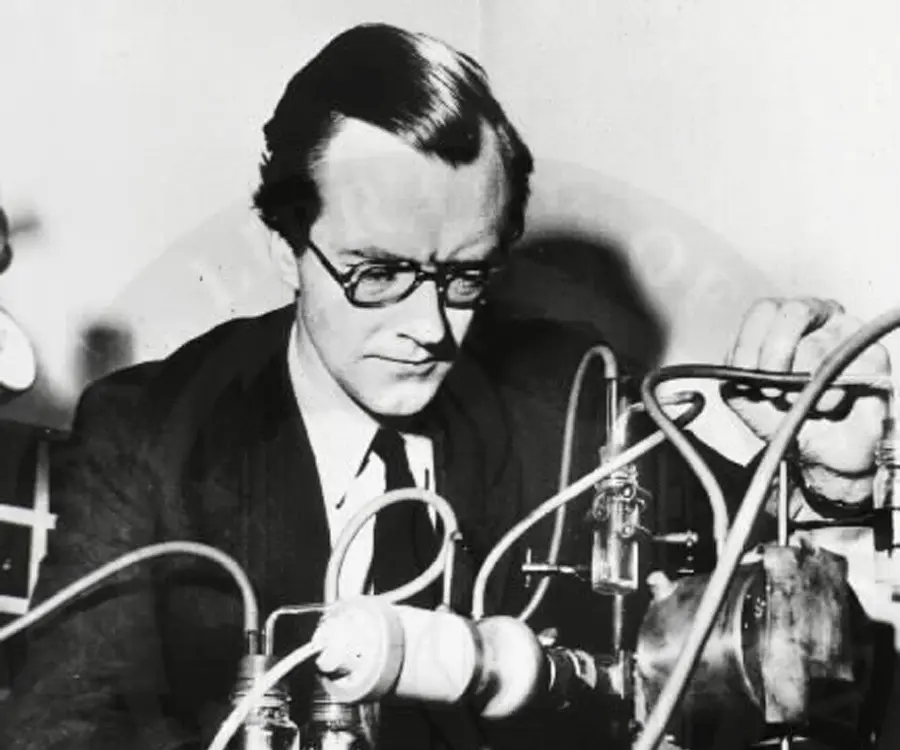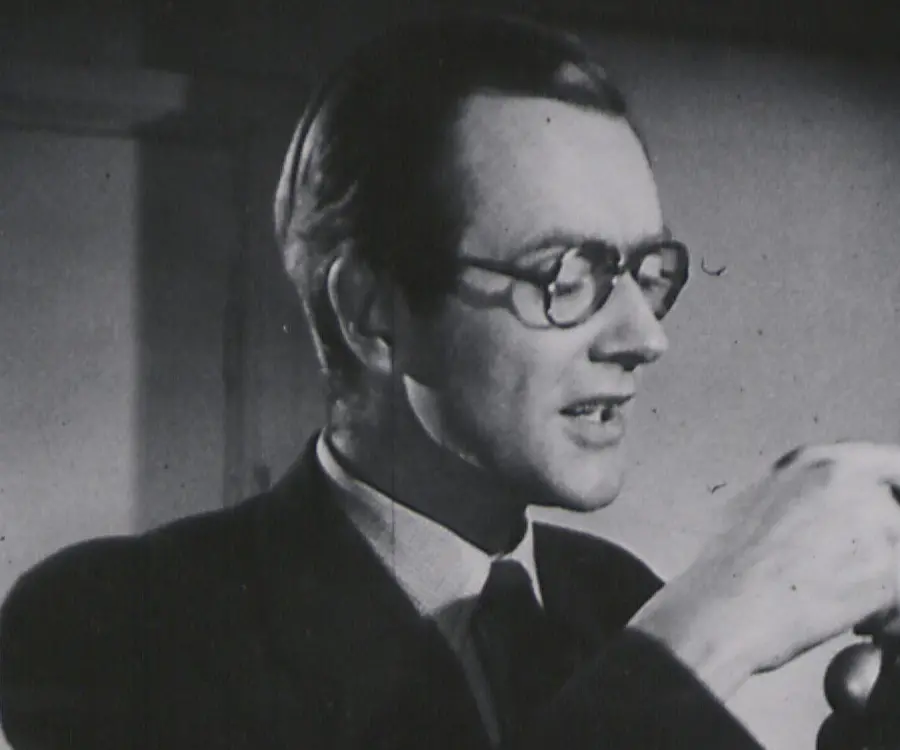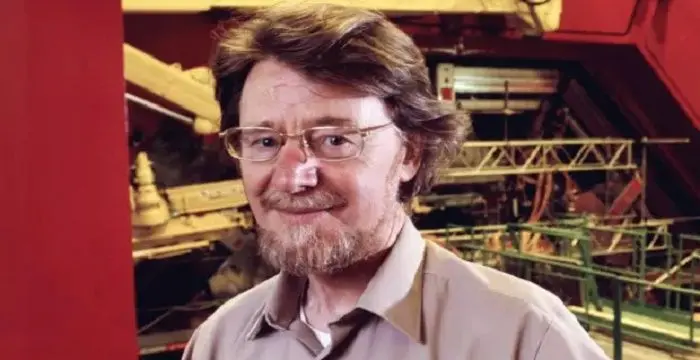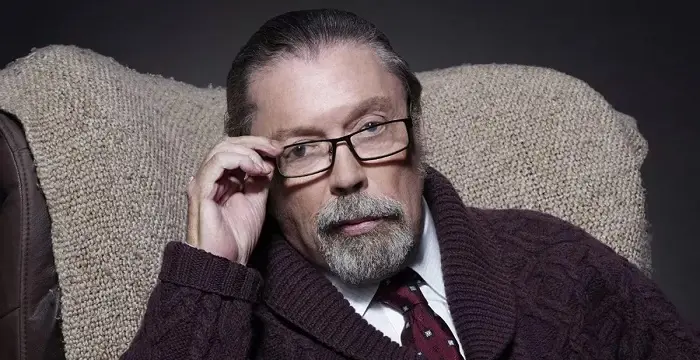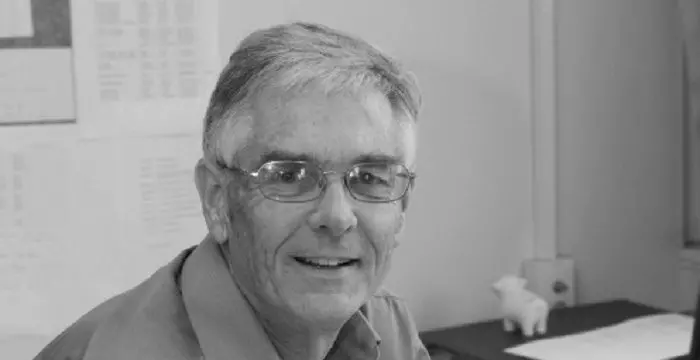
Maurice Wilkins - Scientists, Timeline and Life
Maurice Wilkins's Personal Details
Maurice Hugh Frederick Wilkins was a New Zealand born British biophysicist who was awarded the Nobel Prize in Physiology or Medicine
| Information | Detail |
|---|---|
| Birthday | December 15, 1916 |
| Died on | October 5, 2004 |
| Nationality | British |
| Famous | University Of Birmingham, Scientists, Biophysicists |
| Known as | Maurice Hugh Frederick Wilkins |
| Universities |
|
| Notable Alumnis |
|
| Birth Place | Pongaroa, Wairarapa, New Zealand |
| Gender | Male |
| Father | Edgar Henry Wilkins |
| Sun Sign | Sagittarius |
| Born in | Pongaroa, Wairarapa, New Zealand |
| Famous as | Biophysicist |
| Died at Age | 87 |
// Famous Biophysicists
James Watson
James Watson is an American molecular biologist and geneticist who played a crucial role in the discovery of the molecular structure of D.N.A. This biography provides detailed information about his childhood, life, achievements, works & timeline
Francis Crick
Francis Crick was an English molecular biologist, biophysicist and neuroscientist, who received the Nobel Prize for Medicine. This biography profiles his childhood, life, career, achievements and timeline.
Alan Lloyd Hodgkin
Sir Alan Lloyd Hodgkin was an English biophysicist and a physiologist who received the Nobel prize in Physiology or Medicine in 1963. This biography profiles his childhood, life, research, achievements and timeline.
Maurice Wilkins's photo
Who is Maurice Wilkins?
Maurice Hugh Frederick Wilkins was a British (born in New Zealand) biophysicist who was awarded the Nobel Prize in Physiology or Medicine for producing the first image of DNA fibers. His research constituted mainly of optical microscopy, separation of isotopes, x-ray diffraction, and phosphorescence. He helped in the improvement of radar screens used in the Second World War to detect enemy aircraft approaching the coast of England. He worked in the Manhattan project for some time but later changed over to biophysics. His specialization during the work at the Manhattan project was in spectroscopic separation of uranium isotopes. He soon lost interest in helping create weapons of mass destruction and instead changed over to doing research on biophysics. His discovery contributed to the double-helix model suggested by Crick and Watson in 1953. He and another scientist named Rosalind Franklin provided the secondary research to the double helix theory suggested by experiments carried out by the scientists James D. Watson and Francis Crick which became the basis of further research on the structure of DNA. He shared the Nobel Prize with Watson and Crick as Franklin had died in 1958. He went on to do more work on genetics which included several experiments on RNA.
// Famous Scientists
Juliane Koepcke
Juliane Koepcke is a German-Peruvian biologist, who was the lone survivor among the 92 passengers and crew of the ill-fated LANSA Flight 508 that crashed in the Peruvian rainforest on 24 December 1971. Know more about her life in this biography.
Henry Cavendish
Henry Cavendish was a theoretical chemist and physicist, renowned for discovery of hydrogen and calculation of the mass of earth. To know more about his childhood, profile, timeline and career read on
Konstantin Tsiolkovsky
Konstantin Tsiolkovsky was a Russian rocket scientist and a pioneer of astronautics. This biography provides detailed information about his childhood, family, personal life, career, achievements, etc.
Childhood & Early Life
Maurice Wilkins was born in Pongaroa, north Wairarapa in New Zealand on December 15, 1916. His father, Edgar Henry Wilkins, was a doctor in the ‘School Medical Service’.
He attended the ‘King Edward IV School’ in Birmingham at the age of six when his family moved to England from New Zealand.
After passing high school he enrolled at the St. John’s College under the University of Cambridge in 1935 from where he earned a degree in physics in 1938.
He joined the ‘University of Birmingham’ from where he got his PhD in 1940 by experimenting on the theory of phosphorescence.
Career
He contributed to the war efforts in England during the Second World War by carrying out experiments on phosphorescence for improving radar screens.
Later on he moved to the United States where he was recruited for the Manhattan Project which developed the atomic bomb.
After losing interest in producing weapons like atomic bombs, he moved to the ‘University of St. Andrews’ in Scotland in 1945 and joined as an Assistant Lecturer under John Randall who had been appointed to the Chair of the Physics department. He started working on the X-ray patterns produced by molecular structures. In his further experiments Wilkins was helped by John Randall who thought of using physics to help solve problems related to biology and wanted to combine both these disciplines to form an altogether new discipline called biophysics and carry out more experiments.
In 1946 Wilkins had to move to the ‘King’s College, London’ along with Randall as ‘MRC’ told them to carry out their research in another university. They joined the ‘Biophysics Unit’ of the ‘Medical Research Council’, Randal as the ‘Wheatstone Professor of Physics’ and the head and of the entire department while Wilkins as Assistant Director.
During the month of May or June, 1950, Wilkins and a graduate student, Raymond Gosling, obtained photographs of DNA with the help of X-ray diffraction methods. This photograph showed that the DNA molecule consisted of crystals arranged regularly on threads.
In 1950 Wilkins was joined by James Watson and Francis Crick when they became interested after seeing the photographs of the DNA structure taken by Gosling and himself.
Another researcher, Rosalind Franklin, joined the team in early 1951.
Wilkins was able to prove that cell DNA had a helical structure by November 1951. While working with Clark, Watson and Franklin he was able to obtain the first picture of the DNA strands produced by deoxyribonucleic acid fibers with the help of x-ray diffraction.
He ultimately became the Assistant Director of the ‘Medical Research Council’ in 1950 and then the Deputy Director in 1955. He remained in the post till his retirement in 1981.
He was made an Honorary Lecturer in the ‘Department of Biophysics’ unit in 1961 when it became a full-fledged department.
He worked at the King’s College London throughout the 1960s and 1970s.
In late 1969 he became the president of the ‘British Society for Social Responsibility in Science’ and held the post for almost two decades.
Major Works
Maurice Wilkins published his autobiography ‘The Third Man of the Double Helix’ in 2003.
Awards & Achievements
He was elected a Fellow of the Royal Society’ in 1959.
He received the ‘Albert Lasker Award’ in 1960 from the ‘American Public Health Association’ jointly with Watson and Crick.
He received the ‘Companion of the British Empire’ award in 1962.
He received the Nobel Prize for Physiology or Medicine on October 20, 1962, for his work on DNA.
Personal Life & Legacy
He married his first wife Ruth who was an art student when he was in Berkeley. He had a son from this marriage.
He married Patricia Ann Chidgey in 1959 and had two daughters, Sarah and Emily, and two sons, George and William, from this marriage.
The King’s College London’ built the Franklin-Wilkins Building in honor of Rosalind Franklin and Maurice Wilkins.
Maurice Wilkins died in London, United Kingdom on October 6, 2004.
Humanitarian Work
Maurice Wilkins was an anti-war activist before and during the Second World War and joined the ‘Cambridge Scientists Anti-War Group’. He was disgusted by the dropping of two atomic bombs on the civilian areas of Hiroshima and Nagasaki by America. He had joined the Communist party but gave up his membership when the Soviet Union invaded Poland in 1939.
Trivia
Maurice Wilkins was committed to ethical practices and a humanistic approach in all his research work.
He loved gardening and collected many works of art and sculpture.
// Famous University Of Birmingham
Susanne Klatten
Susanne Klatten is a businesswoman who is the richest woman in Germany. Check out this biography to know about her birthday, childhood, family life, achievements and fun facts about her.
John Stewart Bell
John Stewart Bell FRS was a famous Physicist of Irish descent. He is famous for developing the ‘Bell’s Theorem’ and also for his work in quantum physics. Know more about his profile, childhood, life and timeline in this biography.
Tim Curry
Tim Curry is an actor and musician whose works have covered various media like theatre, television and films. This biography provides detailed information about his childhood, life, achievements, works & timeline.
Maurice Wilkins's awards
| Year | Name | Award |
|---|---|---|
Other | ||
| 0 | Albert Lasker Award for Basic Medical Research (1960) | |
| 0 | Nobel Prize in Physiology or Medicine (1962) | |
Maurice Wilkins biography timelines
- // 15th Dec 1916Maurice Wilkins was born in Pongaroa, north Wairarapa in New Zealand on December 15, 1916. His father, Edgar Henry Wilkins, was a doctor in the ‘School Medical Service’.
- // 1935 To 1938After passing high school he enrolled at the St. John’s College under the University of Cambridge in 1935 from where he earned a degree in physics in 1938.
- // 1939Maurice Wilkins was an anti-war activist before and during the Second World War and joined the ‘Cambridge Scientists Anti-War Group’. He was disgusted by the dropping of two atomic bombs on the civilian areas of Hiroshima and Nagasaki by America. He had joined the Communist party but gave up his membership when the Soviet Union invaded Poland in 1939.
- // 1940He joined the ‘University of Birmingham’ from where he got his PhD in 1940 by experimenting on the theory of phosphorescence.
- // 1945After losing interest in producing weapons like atomic bombs, he moved to the ‘University of St. Andrews’ in Scotland in 1945 and joined as an Assistant Lecturer under John Randall who had been appointed to the Chair of the Physics department. He started working on the X-ray patterns produced by molecular structures. In his further experiments Wilkins was helped by John Randall who thought of using physics to help solve problems related to biology and wanted to combine both these disciplines to form an altogether new discipline called biophysics and carry out more experiments.
- // 1946In 1946 Wilkins had to move to the ‘King’s College, London’ along with Randall as ‘MRC’ told them to carry out their research in another university. They joined the ‘Biophysics Unit’ of the ‘Medical Research Council’, Randal as the ‘Wheatstone Professor of Physics’ and the head and of the entire department while Wilkins as Assistant Director.
- // 1950During the month of May or June, 1950, Wilkins and a graduate student, Raymond Gosling, obtained photographs of DNA with the help of X-ray diffraction methods. This photograph showed that the DNA molecule consisted of crystals arranged regularly on threads.
- // 1950In 1950 Wilkins was joined by James Watson and Francis Crick when they became interested after seeing the photographs of the DNA structure taken by Gosling and himself.
- // 1951Another researcher, Rosalind Franklin, joined the team in early 1951.
- // Nov 1951Wilkins was able to prove that cell DNA had a helical structure by November 1951. While working with Clark, Watson and Franklin he was able to obtain the first picture of the DNA strands produced by deoxyribonucleic acid fibers with the help of x-ray diffraction.
- // 1959He was elected a Fellow of the Royal Society’ in 1959.
- // 1959He married Patricia Ann Chidgey in 1959 and had two daughters, Sarah and Emily, and two sons, George and William, from this marriage.
- // 1960He received the ‘Albert Lasker Award’ in 1960 from the ‘American Public Health Association’ jointly with Watson and Crick.
- // 1961He was made an Honorary Lecturer in the ‘Department of Biophysics’ unit in 1961 when it became a full-fledged department.
- // 1962He received the ‘Companion of the British Empire’ award in 1962.
- // 20th Oct 1962He received the Nobel Prize for Physiology or Medicine on October 20, 1962, for his work on DNA.
- // 1969In late 1969 he became the president of the ‘British Society for Social Responsibility in Science’ and held the post for almost two decades.
- // 2003Maurice Wilkins published his autobiography ‘The Third Man of the Double Helix’ in 2003.
- // 6th Oct 2004Maurice Wilkins died in London, United Kingdom on October 6, 2004.
// Famous Sagittarius Celebrities peoples
Billie Eilish
Billie Eilish Pirate Baird O’Connell is an American singer and songwriter. Check out this biography to know about her childhood, family, personal life, birthday, etc.
Jacelyn Reeves
Jacelyn Reeves is a former flight attendant who once had a fling with Clint Eastwood. Check out this biography to know about her birthday, childhood, family life, achievements and fun facts about her.
Edmund Kemper
Edmund Kemper is a convicted serial killer from America who murdered ten people. Check out this biography to know about his childhood, life, crimes and other facts about him.
Pietro Boselli
Pietro Boselli is an Italian model, engineer, teacher, and fitness athlete who became famous as the ‘world’s sexiest math teacher’. Check out this biography to know about his birthday, childhood, family life, achievements and fun facts about him.
Niqoles Heard
Lil Niqo is an American rapper and musical artist. Let’s take a look at his family and personal life including age, date of birth, net worth, girlfriends, and fun facts.
Ted Nugent
Ted Nugent is a hard rock musician known for his hits ‘Stranglehold’ and ‘Cat Scratch Fever’. This biography of Ted Nugent provides detailed information about his childhood, life, achievements, works & timeline.
Maurice Wilkins's FAQ
What is Maurice Wilkins birthday?
Maurice Wilkins was born at 1916-12-15
When was Maurice Wilkins died?
Maurice Wilkins was died at 2004-10-05
Where was Maurice Wilkins died?
Maurice Wilkins was died in Blackheath, London, England, United Kingdom
Which age was Maurice Wilkins died?
Maurice Wilkins was died at age 87
Where is Maurice Wilkins's birth place?
Maurice Wilkins was born in Pongaroa, Wairarapa, New Zealand
What is Maurice Wilkins nationalities?
Maurice Wilkins's nationalities is British
What was Maurice Wilkins universities?
Maurice Wilkins studied at University Of Birmingham
What was Maurice Wilkins notable alumnis?
Maurice Wilkins's notable alumnis is University Of Birmingham
Who is Maurice Wilkins's father?
Maurice Wilkins's father is Edgar Henry Wilkins
What is Maurice Wilkins's sun sign?
Maurice Wilkins is Sagittarius
How famous is Maurice Wilkins?
Maurice Wilkins is famouse as Biophysicist

